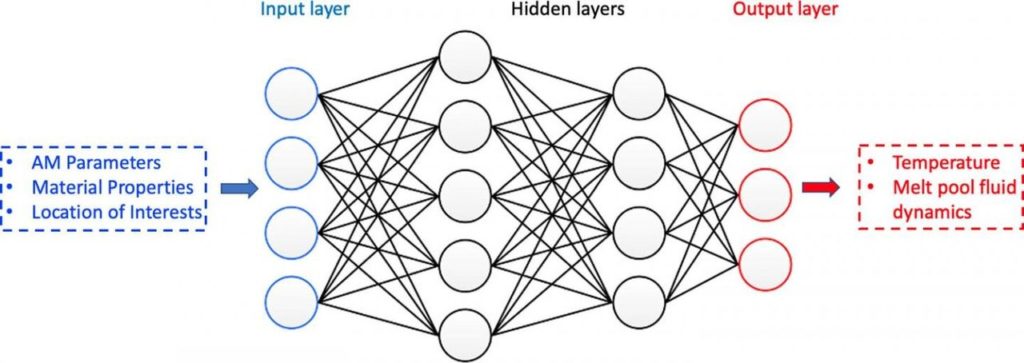
What will a meltpool look like? That’s what researchers can now predict with some accuracy.
The meltpool is a critical aspect of PBF 3D printing. It’s essentially a temporarily liquid region where powerful lasers have just transferred tremendous energy, causing the melt.
This meltpool is then “dragged” around the print bed as the lasers reposition to form the desired shape within the layer.
To obtain a successful 3D print it’s incredibly important to understand the meltpool. If you were to drag it too fast the powder may not be exposed sufficiently long to provoke melting. But what happens behind the meltpool? How does the trail cool, and what shape might it have? How will this impact the quality of the print?
Normally this is answered through a simulation. However, this is a highly complex process, according to University of Illinois PhD student Qiming Zhu:
“The problem is multi-phase and involves gas, liquids, solids, and phase transitions between them. Additive manufacturing also has a wide range of spatial and temporal scales. This has led to large gaps between the physics that happens on the small scale and the real product.”
In other words, it’s too hard to simulate this properly, particularly for enormously complex 3D models that are increasingly in demand.
The new research has confirmed it’s possible to use AI techniques instead of simulation. Neural nets are a form of machine learning in which input data can be “recognized”, and thus categorized.

Their experimental system can accept input parameters about a proposed 3D print job and determine factors related to output quality. This is possible because the neural network has been trained using vast amounts of high-quality data obtained during actual 3D print jobs.
Specifically, they were able to predict the temperatures and length of a meltpool given certain input data, and within ten percent of the actual result.
While their research is at this point predicting the state of the meltpool at a static time, the technology might in the future be adapted for more practical use in additive manufacturing systems.
For example, predictions of meltpool during movements like curves, starts and stops might be incorporated into the neural network. If a sufficient collection of “standard moves” were available, then there might be the potential for realtime monitoring of a 3D print job to detect variations from expected results.
Via TechExplore and Springer
